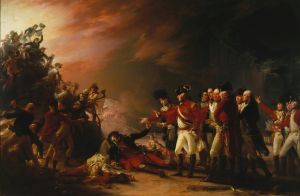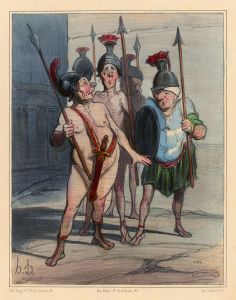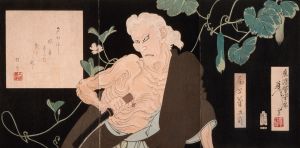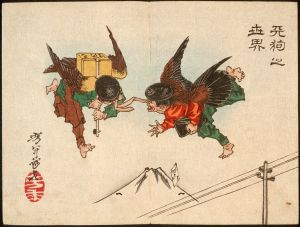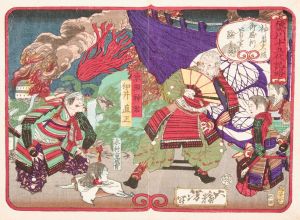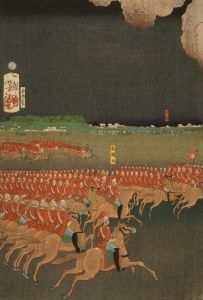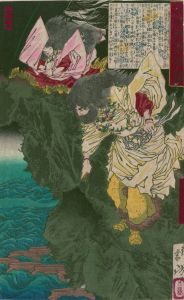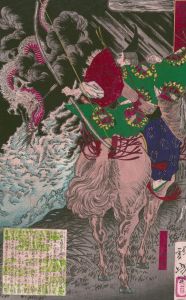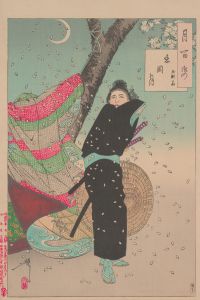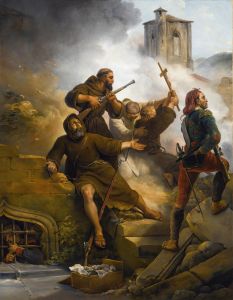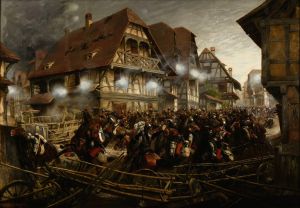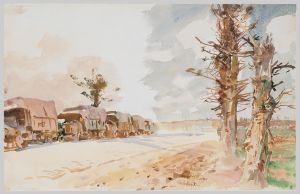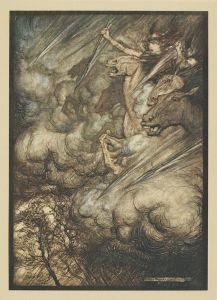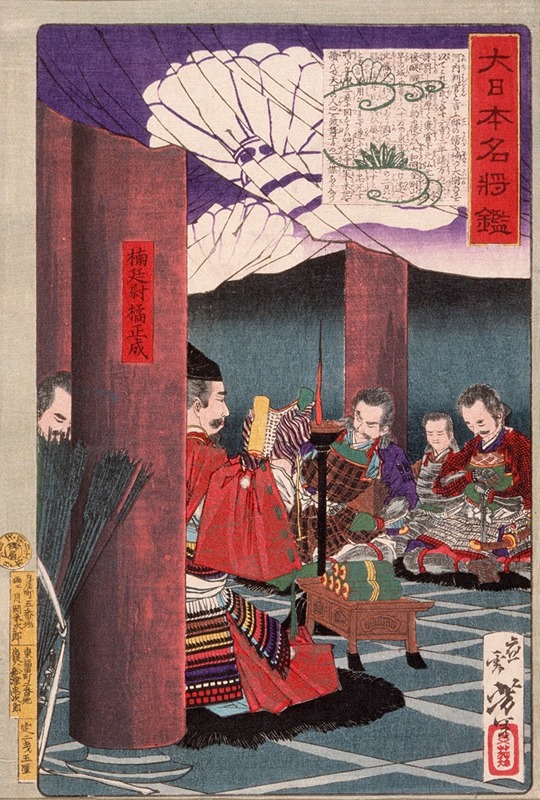
Kusunoki Masashige Reading to His Troops at the Temple Shitennōji
A hand-painted replica of Tsukioka Yoshitoshi’s masterpiece Kusunoki Masashige Reading to His Troops at the Temple Shitennōji, meticulously crafted by professional artists to capture the true essence of the original. Each piece is created with museum-quality canvas and rare mineral pigments, carefully painted by experienced artists with delicate brushstrokes and rich, layered colors to perfectly recreate the texture of the original artwork. Unlike machine-printed reproductions, this hand-painted version brings the painting to life, infused with the artist’s emotions and skill in every stroke. Whether for personal collection or home decoration, it instantly elevates the artistic atmosphere of any space.
Tsukioka Yoshitoshi (1839–1892) was a prominent Japanese ukiyo-e artist, known for his innovative and dramatic woodblock prints. One of his works, Kusunoki Masashige Reading to His Troops at the Temple Shitennōji, depicts a historical moment involving Kusunoki Masashige, a celebrated samurai and loyalist of the 14th century.
Kusunoki Masashige (1294–1336) was a military commander who became a symbol of loyalty and devotion to the emperor in Japanese history. He is best known for his unwavering support of Emperor Go-Daigo during the Kenmu Restoration, a brief period in which imperial rule was restored after the fall of the Kamakura shogunate. Masashige's strategic brilliance and self-sacrifice in the face of overwhelming odds earned him a lasting legacy as a paragon of samurai virtue.
The scene depicted in Yoshitoshi's artwork shows Kusunoki Masashige addressing his troops at Shitennōji, a historic Buddhist temple in Osaka. Shitennōji, founded in the 6th century by Prince Shōtoku, is one of Japan's oldest temples and has long been associated with both religious and cultural significance. In the context of the artwork, the temple serves as a backdrop for Masashige's preparations for battle, emphasizing the solemnity and gravity of the moment.
Yoshitoshi's depiction captures the tension and resolve of the samurai as they prepare for their fateful confrontation. The artist's use of bold lines and dramatic composition reflects his mastery of the ukiyo-e style, which was undergoing significant transformation during the late Edo and early Meiji periods. Yoshitoshi was particularly known for his ability to convey emotion and narrative depth in his prints, and this work is no exception.
While the exact historical details of Kusunoki Masashige's actions at Shitennōji are not fully documented, the image resonates with the broader themes of loyalty, duty, and sacrifice that define his legacy. Yoshitoshi's portrayal of this moment serves as both a historical homage and an artistic interpretation, reflecting the enduring cultural significance of Masashige's story in Japan.
This artwork is part of Yoshitoshi's larger body of work, which often drew inspiration from historical and legendary figures. His prints frequently explored themes of heroism, morality, and the human condition, making him one of the most influential ukiyo-e artists of his time.





